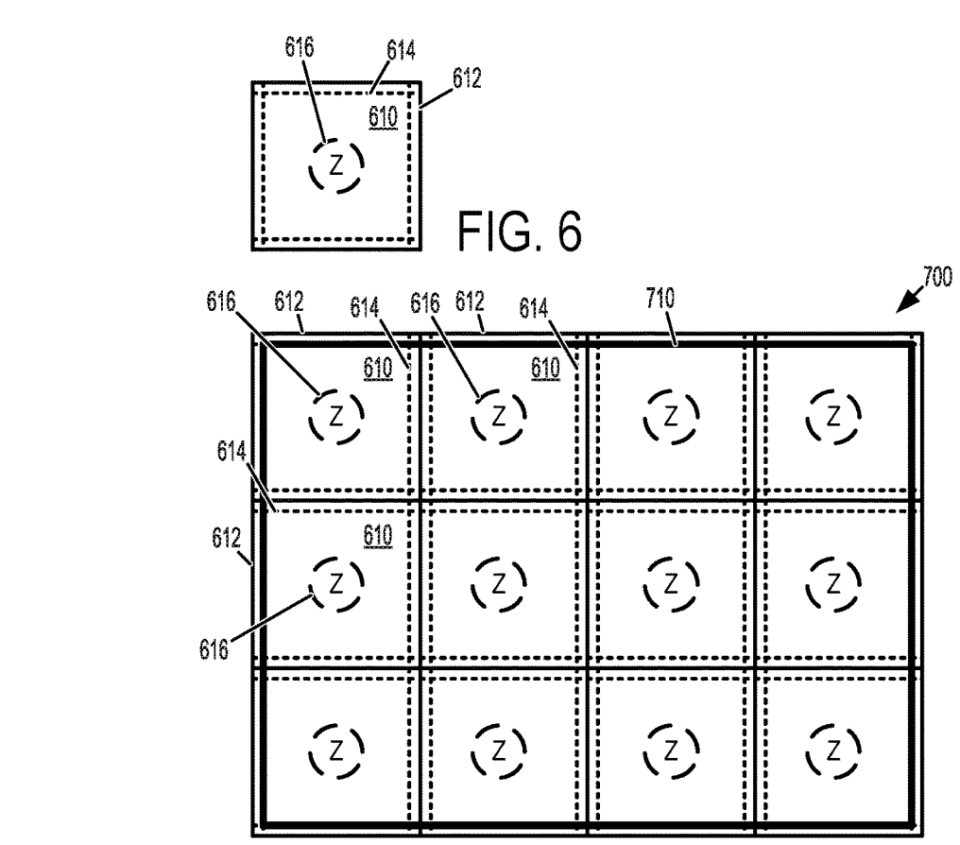Microsoft Files Patent for Virtual Reality Floor Mat, Hints at Xbox VR Support

Click here to read the full article.
Microsoft has filed a patent application for a dedicated floor mat for virtual reality (VR), which could help users avoid obstacles while wearing a headset. The patent application also suggests that the company hasn’t given up entirely on the idea of bringing VR to its Xbox game console.
A Microsoft spokesperson declined to comment.
More from Variety
'The Walking Dead' VR Game Lets You Fight Zombies, Humans in New Orleans: Watch the Trailer
VR Startup Nomadic Replaces CEO Doug Griffin With Former The Void CEO Cliff Plumer (EXCLUSIVE)
The patent application for a “virtual reality floor mat activity region,” which was published by the U.S. Patent and Trademark Office this week, deals with a real-world problem that many VR users have experienced first-hand: VR provides full immersion, completely blocking out the outside world. That includes walls, coffee tables, shelves and other objects that a player may hit or bump into while playing a VR game.
VR systems aim to reduce the risk of such accidents with the help of guardian systems, which display warning messages when users leave the play space, or sometimes even make the VR world disappear completely — but those warnings haven’t prevented a number of accidents documented by players on social media. In fact, a Russian VR gamer is said to have died after falling through a glass table in 2017.
A number of players have tried to prevent these kinds of accidents by getting their own rubber floor mats, giving them an additional physical cue that helps to stay inside their play space. Microsoft’s patent application builds upon that same idea, but adds a few extra bells and whistles.
These include special fiducial markers that could be used by a VR headset to recognize a mat, and adjust play space settings accordingly. The patent application also explores the idea of having a dedicated start position; players could for instance position their feet on special foot markers in the middle of the mat to launch a VR experience.
The patent application also describes the possibility of including pressure sensors directly into the mat itself: “A virtual reality mat may include a plurality of spatially distributed pressure sensors integrated into the mat to detect a physical pressure or force applied to an activity surface of the mat,” it reads. “Such pressure sensors enable the virtual reality system to identify where the user is standing in relation to the mat, without necessarily requiring that the user be visually detected by an optical sensor.”
What’s more, the mat could also provide haptic feedback, according to the patent application: “The floor mat may include one or more vibration devices integrated into the floor mat to generate vibration at the floor mat; and the virtual reality experience may be augmented by generating vibration at the floor mat via at least one vibration device of the one or more vibration devices.”

The patent application describes different possible implementations of such a mat in detail, including one that would allow consumers to customize their own play space with interlocking tiles.
Interestingly, the application also makes a passing mention of an idea that has gotten less attention at Microsoft in recent years: In addition to working with a PC-based or standalone headset, the mat could also work with a VR system powered by Microsoft’s Xbox, the document suggests. “In some examples, (the) computing device may take the form of a gaming console, and (the) HMD device and peripheral control devices (…) may be peripheral to the gaming console. ” The illustration for the patent also clearly features an Xbox in combination with a Kinect controller.
It’s worth noting that companies regularly patent all kinds of technology, and that such patent applications don’t necessarily suggest any active products under development. The mention of the game console in particular could have just been an attempt to cover all of its bases, and make sure that no one files a competing patent specifically for very use case.
Microsoft embraced the idea of bringing VR to the Xbox a few years ago, only to renege on its commitment in recent years. Executives have told the media that they had no plans to bring VR to the Xbox One, and the company made no mention of VR when it previewed the next-generation Xbox at this year’s E3 either.
Still, the appearance of the game console in this patent may give Xbox fans some hope. At the very least, the patent application may point to a future when VR gamers can more safely play in their living rooms without punching their walls and breaking their glassware.
Best of Variety
Listen: Hugh Grant on Why He Would Kill Social Media if He Could
'Game of Thrones' Filming Locations in Northern Ireland to Open as Tourist Attractions
Sign up for Variety’s Newsletter. For the latest news, follow us on Facebook, Twitter, and Instagram.

